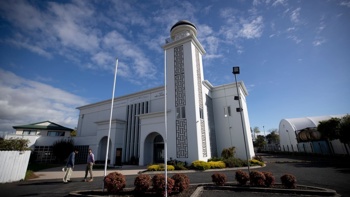Fixing poorly done earthquake repairs is likely to cost $1 billion, says a structural engineer involved in more than 100 cases.
John Scarry said he is yet to see a competent repair in 140 Christchurch jobs he has assessed.
Scarry, who lives in Auckland but has given expert advice to homeowners affected by the Christchurch earthquakes, said EQC repairs and those done via other insurers were cosmetic.
A common example was the failure to properly relevel timber floors, said Scarry, who has campaigned for years against poor building standards.
He cited one example where 22 piles needed to be replaced to relevel the floor, but only six were.
"I haven't seen a suspended timber floor that has been properly relevelled," said Scarry. "Everything that has been done is a cosmetic repair."
Common problems included "drummy" (loose) plasterboard linings which reduced bracing and stiffening of the house, 'repointing' repairs of cracked brickwork without checking whether the brick ties had failed and, in one instance, a badly cracked double cavity brick house that was "beautifully" plastered over inside and out while the structural cracking within the walls was untouched.
The failure to make proper repairs has led to a massive and rising bill for redoing botched repairs, not to mention the stress for owners.
EQC confirmed to the Herald that $315 million has been spent on redoing inadequate repairs with another $322m forecast for future work, not including settling court cases.
Scarry said he expects the cost to top $1b.
EQC had done emergency repairs well, such as taking down damaged chimneys, but substantial repairs were almost always poor, he said.
"People are saying that much more than $1b will be spent regarding repair work that has to be done again due to the lack of skilled people to do and supervise the original repairs."
/arc-anglerfish-syd-prod-nzme.s3.amazonaws.com/public/CD35N6SKNVDQJPGZPVSPB7CGEA.jpg)
Damaged buildings in the central city on the evening of the February 22, 2011 Christchurch earthquake. Photo / Mark Mitchell
Repair work was often difficult but had to be done well or not at all, Scarry said.
A public inquiry into EQC's handling of claims arising from the Canterbury earthquakes is being headed by former Governor-General Dame Silvia Cartwright. An inquiry spokesman said notices calling for submissions were expected to be issued in April.
Dame Silvia has said the aim of the inquiry, which will also look at the response by other insurers, was to suggest improvements.
EQC Minister Megan Woods announced the inquiry - which has the powers of a Royal Commission, will be independent of Government and make its report directly to the Governor-General - after a report by a ministerial adviser found EQC to be hamstrung by disorder and dysfunction, to have serious problems with data keeping and its attitude towards claimants.
Scarry, who has in the past consulted MPs about the capability of the building and construction sector, told the Herald that the cause of the the poor fixes went beyond the capability of EQC.
The root causes were poor trade skills and a culture of shortcuts that had grown over time.
"EQC was hit with an enormous task and were without the necessary number of highly skilled engineers and senior skilled tradesmen to call on, and the necessary number of skilled contractors and contracting staff to call on.
"This goes to major systemic skills and competence deficiencies in New Zealand's building and construction sector that have developed over decades, and which have not been properly addressed despite numerous credible warnings to the highest levels of government."
No one had properly assessed the scale of damage that would occur in earthquakes and the work involved, especially for houses with timber floors.
"In more than 140 cases, many of which have had EQC repairs, I have yet to see a competent repair."
A test case alleging negligence by EQC is scheduled for August. Brought for clients of insurance litigators Shine Lawyers, a hearing is scheduled for August.
The company has acted for hundreds of people with earthquake damaged homes and those whose repairs had been botched.
Shine director Karl Robinson said a new group of clients was those who had bought houses in good faith thinking they had been properly fixed by EQC.
/arc-anglerfish-syd-prod-nzme.s3.amazonaws.com/public/6VVNCEMMO5FLNEWZJCTM3IARG4.jpg)
A jack and piece of decking timber were used in this supposedly permanant EQC fix of Jennifer Dalziel's historic Christchurch villa. Photo / Supplied
In the event of earthquake damage, EQC pays the first $100,000 plus GST and the private insurer picks up the rest.
In many cases, EQC assessed repairs as being well inside the cap so owners did not need to involve their private insurer.
Problems arise when houses are on-sold and the new owners discover the repair is poor and the damage is extensive. In that situation, they have no private insurance to claim.
Shine claims that as a direct result of EQC's negligence, these people have lost hundreds of thousands of dollars.
EQC, a Crown entity, claims to be bound by the $100,000 statutory cap.
At a glance, Jennifer Dalziel's villa looks okay. It's the downhill run from the kitchen to the living room that gives the lie to that first impression.
And that is how it is now, following two botched fixes to her historic Hurst Seagar-designed home.
"All of the damage is under the floor," Dalziel told the Herald. So are a jack and piece of timber left over from her deck that were used in what should have been no more than a temporary jack-and-pack repair.
She is unsure when this "fix" was done by EQC. "It's still there," she said. "It's just sitting there."
A poor repair done after the February 2011 earthquake was exposed by the earthquakes in June and December of that year which caused the house to sink in all the same places and in other spots too.
Then, in 2014, another poorly-done EQC patch-up. "Both [fixes] were a disaster. The second was worse than the first."
The first assessment was by builders. The second time, a retired headmaster who couldn't operate his tablet visited.
Only after she filed court action did EQC send a qualified engineer. He confirmed what Dalziel always suspected - her house needed to be lifted and the entire foundation rebuilt.
Seven years after the first earthquake, EQC paid her $100,000 plus GST (the full amount of its statutory cap) minus emergency repairs.
"The whole thing was a total shemozzle. What a huge disaster for everybody."
Dalziel said EQC didn't have enough qualified people to call on.
"Good builders elsewhere in New Zealand with good client bases didn't come to Christchurch. Why would they? The ones who came were often the worst. EQC paid them good money. It was like a gold rush."
Had she not had the perseverance, she said, "I'd still be sitting here thinking 'this is just not right'."
"The ones who fared the worst were the sick, elderly, or single women. You just got trampled over."
Take your Radio, Podcasts and Music with you









